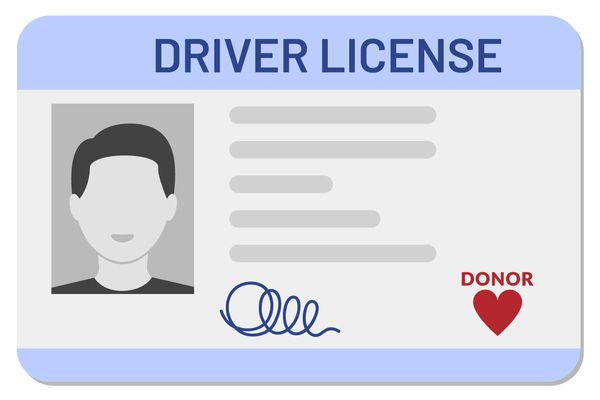It’s always challenging to talk about death. It’s even harder when helicopters are drowning out your conversation. On a flawless Charleston spring afternoon, I was chatting with a palliative care social worker. We were both there to attend a lectureship on the ethics of organ transplantation, but as we stood outside a Medical University of South Carolina building during a break, we couldn’t ignore that our words were being increasingly muffled out by an overhead whirr.
My companion looked upward. “Probably another critical care patient,” she said, clearly accustomed to the sound. Hovering in the cloudless sky over our heads, there was a living person in crisis, someone who might in the very near future become a dead body. I was there learning how fluid the difference between those two states really can appear. In this country, we have spent decades debating when life begins, and the ethical and legal implications of that question. But when does death begin? And what do we do when it looks uncannily like life?
What does it mean to be “actually dead”?
On Friday, Aug. 12, 2022, a Los Angeles Times headline announced “Anne Heche, TV, film and stage actor, dies at 53 from injuries in L.A. car crash.” Salon similarly ran the news that Heche was “dead at 53” after injuries sustained from a car crash. A full two days later, The New York Times reported that Heche “died on Sunday in Los Angeles.” The obituary went on to state that Heche spokesperson Holly Baird had confirmed via email that the actor was “peacefully taken off life support.”
The discrepancy in the death date had arisen because Heche was an organ donor. The Los Angeles Times explained, “As of Friday, Heche was legally dead, but her heart was still beating and her body was kept on life support to preserve viable organs for possible donation.” In a follow-up feature, The Washington Post affirmed that editorially, it “doesn’t recognize brain death.” Obituaries editor Adam Bernstein explained, “It’s black and white. There’s no gray area here. If you’re on life support, you’re still alive. Other publications can make their own judgment about when they’re comfortable publishing. I’m comfortable when someone is actually dead.” Heche’s family concurred with The Post’s call. Baird told me that the actor’s family considers Sunday, Aug.14, “the day the statement went out,” as the date of her passing.
Contrary to what The Post says, the determination of when a person is “actually dead” isn’t black and white at all. At times, it’s a complex judgment call, one that medical, legal, ethical and theological experts — as well as surviving family members and media outlets — don’t always agree upon. For a person who is a registered organ donor, the determination of death starts a clock running for viable procurement. For their loved ones, it’s the life-changing difference between being a wife and a widow, a companion and a mourner, a child and an inheritor. For individuals across a wide span of varying belief systems, it’s a matter of when the person they cared about is still here, and when their soul has departed for somewhere else. And it’s a process that, for almost all of us who are registered organ donors, begins with the casual checking of a box.
Checking the box
The nonprofit Donate Life America estimates that 90% of organ donor registrations in the United States come via state departments of motor vehicles (DMVs). Organ donor icons now appear on 47 out of 50 state driver’s licenses. The advantages of DMV deceased donor registration are apparent, as most American adults carry driver’s licenses. But is checking that box anything like informed consent? When I enrolled in a clinical trial, I had to sign off on 28 pages of detailed information involving numerous potential scenarios. The last time I renewed my driver’s license, I gave more thought to what my hair and makeup looked like in my photo than I did to the end-of-life directive I tacked on as an afterthought.
 Driver’s license of organ donor, illustration (Getty Images/LinaDes/Salon)It’s easy to grant approval for organ donation without actually considering how it might play out. In New York, where I live, the “Become an Organ Donor” information page doesn’t mention the word “death” even once, though it does appear on the bottom of the enrollment form. (However, you can find, if you look around a little, a PDF fact sheet that does explain that your decision to be a donor “will not affect your medical care or treatment while you are alive.”) What definitely isn’t there is a mention of the possibility that your body might be deceased as your heart continues to beat for the purposes of procurement.
Driver’s license of organ donor, illustration (Getty Images/LinaDes/Salon)It’s easy to grant approval for organ donation without actually considering how it might play out. In New York, where I live, the “Become an Organ Donor” information page doesn’t mention the word “death” even once, though it does appear on the bottom of the enrollment form. (However, you can find, if you look around a little, a PDF fact sheet that does explain that your decision to be a donor “will not affect your medical care or treatment while you are alive.”) What definitely isn’t there is a mention of the possibility that your body might be deceased as your heart continues to beat for the purposes of procurement.
Over the past few years, I have thought about what it means to die on a daily basis. My stepfather, mother and mother-in-law have all died, in what felt like whiplash succession. I have watched other people in my life go through sudden and terrifying brushes with mortality. Now, another close friend is nearing the end of what’s been a particularly cruel diagnosis and illness. Meanwhile, I’m doing a doctoral program in medical humanities, focusing on care ethics. Yet for all my personal and scholarly proximity to death, I still have felt deeply in the dark about how and when that light goes out for good. I wanted to understand.
“We’re tied to this idea that death is an event, that it’s a binary.”
That day in Charleston, I listened, riveted, when one of the speakers, Aaron Wightman, MD, MA, observed, “We’re tied to this idea that death is an event, that it’s a binary.” His words left me wondering what it would mean for death to be something else. If a heart is kept beating, if a body is kept warm, is that death? When is a person dead enough to execute their will? To send up a prayer to their spirit? To grieve their absence?
“In a legal sense, death is a binary. One is dead, or one isn’t,” Wightman, the co-director of education at the Treuman Katz Center for Pediatric Bioethics and Palliative Care at Seattle Children’s Hospital, told me a few weeks after the event in Charleston.
The experience of dying, however, is complex, involving different organs and functions that don’t all cease simultaneously. The criteria for evaluating and defining death have evolved over time and continue to do so. And the organ procurement process, along with the ever-advancing technology surrounding it, complicates our understanding of how and when the end of life arrives.
“In a physiologic sense, and in a medical sense, death is a process that occurs over time,” Wightman said. “A declaration of death is made by a clinician during the dying process, but that declaration is informed by definitions of death. These definitions, while appearing objective and unchanging, also reflect value judgments about the time we choose to treat a human being as deceased and potentially as an organ donor. Defining death is a moral rather than purely scientific question.”
Wait, don’t we already know what death is?
The breath stops, the heart stops, the brain stops and rigor mortis soon appears. Death, in the vast majority of circumstances, is a clearcut experience that isn’t up for debate. Yet we humans carry within ourselves the primal hope and the primal fear of someone making the wrong call. Jesus famously contradicted the bad news about his friend Lazarus, and later used the same move on himself, to great success. Edgar Allan Poe’s recurrent literary fascination with premature burial helped spur a 19th-century industry of “safety coffins,” tricked out with bells or escape hatches in case the morgue had been premature. By the 20th century, it was advancements in medicine that created the need for a more surefire assessment of death.
“Defining death is a moral rather than purely scientific question.”
Having an agreed-upon determination of death is crucial in organ procurement because the vast majority of the organs used in transplantation are obtained from the deceased. Transplant ethics in the U.S. are guided by the Dead Donor Rule, which requires that an individual be declared deceased before certain vital organ procurements. Among the body parts that can be donated after death are the heart, pancreas, corneas, lungs, kidneys and liver.
The Uniform Anatomical Gift Act, which provides the legal backbone of the organ donation process in the U.S., was enacted in 1968. That same year, spurred by both “improvements in resuscitative and supportive measures” and concerns that “obsolete criteria for the definition of death can lead to controversy in obtaining organs for transplantation,” a Harvard Medical School committee recalibrated our modern American understanding of the end of life. “A Definition of Irreversible Coma” brought the concept of brain death into the vernacular and put the emerging field of organ transplantation front and center within it.
Since then, language has continued to evolve, and Harvard’s use of the word “coma” there doesn’t align with how we think of it today. In comas or persistent vegetative states, the conditions that spurred galvanizing right-to-die cases like Karen Ann Quinlan’s and Terri Schiavo’s, a person may be able to breathe independently, and there will still be some brain function. In brain death, there’s no brain stem activity.
A peer-reviewed feature in the December 2020 AMA Journal of Ethics reported that “there have been no legitimate, unconfounded false positive cases of a patient declared dead by neurological criteria according to the practice parameters put forth by the [American Academy of Neurology].” A correctly declared brain-dead person isn’t in a coma; they won’t recover. A 2014 article in the journal Neurology further makes the case for “Why brain death is considered death and why there should be no confusion,” explaining that “In the medical judgment of practicing neurointensivists, neurosurgeons, and all neurologic and neurosurgical societies and academies throughout the world, brain death constitutes death of the person.”
A decade after the Harvard report, the Uniform Law Commission (ULC) set out to create a centrally agreed-upon criteria for death in the U.S. What began as the 1978 Uniform Brain Death Act eventually evolved into the Uniform Determination of Death Act (UDDA), and in 42 years, the bar it set has remained unchanged. In succinct, plain language, the UDDA states that “An individual who has sustained either (1) irreversible cessation of circulatory and respiratory functions, or (2) irreversible cessation of all functions of the entire brain, including the brain stem, is dead. A determination of death must be made in accordance with accepted medical standards.” The UDDA is the standard in 37 states and the District of Columbia, but other states have set their own guidelines.
A great deal in that small text conspicuously comes down to opinion. The ULC notes that “The UDDA is intentionally not entitled the Definition of Death Act. This is because it does not contain an exclusive definition of death.” The word “irreversible” can be a judgment call. (There is some discourse around whether the word “permanent” would communicate the standard more effectively.) And the phrase “all functions of the entire brain” isn’t fully accurate for a variety of reasons, including that there can be lingering activity in the hypothalamus after brain death is declared. This is one of the biggest points of contention about the phrasing of “brain death.”
What is death? Depends on where you die
Further complicating matters, every state has its own language for how “accepted medical standards” are met, and by whom. Decisions can vary from state to state, hospital to hospital, practitioner to practitioner. New York state’s determination of death allows that “Each hospital shall establish and implement a written policy regarding determinations of death” based on UDDA guidelines. Idaho tacks on a criteria to meet “the usual and customary procedures of the community in which the determination of death is made.” And Georgia stipulates that the determination be made by “a qualified physician, by a registered professional nurse authorized to make a pronouncement of death, or by a physician assistant authorized to make a pronouncement of death.”
Meanwhile, New Jersey is the only state that recognizes “the legal right of an individual to claim an exemption from the application of neurological criteria for determining death if such a declaration would violate that individual’s personal religious beliefs.” In other words, a person can be declared brain dead, and their next of kin or health care proxy has the right to disagree. Over the past decade, an increasing number of families — almost always parents pushing back against a determination regarding their children and often in cases involving organ transplant directives — have done so.
In December 2013, three days after hemorrhaging and going into cardiac arrest following a complex tonsillectomy, 13-year-old Jahi McMath was declared brain dead. Children’s Hospital Oakland later released McMath to the Alameda County coroner’s office, and a death certificate was issued. Her family fought the hospital’s decision to discontinue life support, filing a lawsuit in Alameda Superior Court. McMath was eventually moved to an undisclosed facility where, as her family attorney Christopher Dolan put it, she could be kept on a ventilator and “treated like the innocent little girl that she is, and not like a deceased body.”
Over the next five years, McMath’s body continued to grow. It went through puberty, and her uncle told CNN that she was responsive to audio and touch. She was officially pronounced dead of complications from liver failure on June 22, 2018, in the state of New Jersey.
Because McMath was only 13 when she was declared brain dead, she wasn’t bound by any organ donation authorization. But for other individuals in similar cases, there had been a choice — one that became deeply contested. Following a snowboarding accident in 2007, the parents of 18-year-old Ohio teen Gregory Jacobs sued his hospital and the Center For Organ Recovery and Education, alleging that the hospital had hasted his death for the purpose of organ procurement. The case was eventually settled for $1.2 million.
“They said from the neck up he’s dead, but he don’t look dead to me.”
In 2019, 26-year-old Arizona man Ruben Vati was pronounced dead following a drug overdose. His family responded by procuring a temporary restraining order to keep him on life support. Though Vati’s parents claimed on his behalf that he had later “expressed remorse over this decision,” he was registered with the Donor Network of Arizona. The family sued the organization and the hospital to prevent the planned organ donation, and the Network countersued the family, arguing that five patients were awaiting the donation he had authorized in the event of his death. “They said from the neck up he’s dead,” his mother Stela Vati told reporters at the time, “but he don’t look dead to me.”
What Stela Vati endured remains a devastating scenario to imagine: watching over a son who appears alive while doctors tell her that he is dead. Knowing what can be done to keep the appearance of life, should looking dead be a consideration in deciding if someone actually is dead? In an op-ed about McMath published by CNN, bioethicist Robert Veatch urged for the legal system to “let parents decide if [the] teen is dead.”
“Society should show sympathy for mothers who want their children to be kept alive . . . Whether this right to medical support should extend to those considered dead by one standard, but alive by another is the question we face with Jahi McMath,” Veatch wrote in 2014. “If the patient does not suffer, and private funding is available, people should have the right to make this decision for their loved ones.”
In the Neurology article on brain death published later that year, the authors countered that “such a position assumes that the integrity of medical professionals is not compromised in such circumstances. We reject this position as falling outside the scope of conventional thinking about the management of a deceased patient’s body following a declaration of death.”
Why there can be disagreement over whether a person is dead
Clearly, in spite of the UDDA, a declaration of death isn’t always the final word. How did we get in such a murky place? If anyone had a solid answer, I figured it would be Thaddeus Pope, JD, PhD, HEC-C, an attorney and professor at Mitchell Hamline School of Law in Saint Paul, Minn. While I also met Pope in Charleston, I had been hearing about him for years through my academic work in ethics. He’s one of the country’s most influential experts on brain death law, as well as the co-author of “Right to Die: The Law of End-of-Life Decisionmaking.”
Pope replied, professorially, with a question. “So, what does it mean to be dead?” Then he explained, “You can be dead because you’re neurologically dead, or you can be dead because you’re circulatory dead. Very few people die on brain death criteria, maybe 20,000 out of 3 million. It’s an incredibly small number. Almost everybody, when they die, is declared dead on circulatory criteria. The challenge is that I think the general understanding is that it’s some kind of objective scientific truth, that it’s irreversible, that it’s not man-made. And all of those things are not true.”
“We made up brain death. It’s arbitrary.”
“We made up brain death. It’s arbitrary,” he continued. “We drew the line where we drew it. We could have drawn it somewhere else. Worse, every year, there are many cases of brain-dead pregnant people. This shows that obviously, brain death doesn’t mean that the body has disintegrated. The body can still do lots of stuff, even after death. Right off the bat that strikes people as, ‘That doesn’t seem right.’ And it’s not right, because legally it’s supposed to be irreversible cessation of all functions of the entire brain.”
“The line between life and death is less clear than it used to be, more contested than it used to be,” Pope added. “It’s switched from this life and death question to more of a ‘Who has the right to control life-sustaining health care?’ question.”
Pope said he can see a clear rise in challenges to determinations of death over the past decade. “If we charted this starting from the Jahi McMath case,” he said, “you have an amazing number of conflicts in the hospital where they say, ‘Sorry, your family member is dead,’ and the family says, ‘No, they’re not. We don’t believe you.’ Jahi McMath got so much attention that it spurred people to re-examine all of this. Not just the clinicians, not just the ethicists, not just the lawyers, but also the advocates.”
Inevitably, this is where religion gets involved. “You have organizations like Texas Right to Life,” Pope said, “which say, ‘Look, call us. If the hospital tells you that your loved one is dead, we’ll fight for you.'”
While it lacks the single-issue momentum of the anti-abortion movement, death is another topic that has been embraced by religious and political conservative groups. On the Texas Right to Life site that Pope guided me to, there’s an anxious warning about the potentially “fatal consequences for those of us with that little red heart on our driver’s licenses.”
“Despite seeing your loved one breathing, despite seeing them maintain their blood pressure, urinate, squeeze your hand, or cry . . . once a declaration of brain death has been entered, your consent to remove basic medical care like a ventilator is no longer required,” Emily K. Cook writes. “It is at this stage when Texas Right to Life receives many calls from bereft spouses, desperate parents, and helpless children.”
We Americans don’t have confidence in our health care, and often with good reason.
We Americans don’t have confidence in our health care, and often with good reason. In a 2023 Harris poll, more than half of respondents gave their care a C rating or lower. The problems run even deeper in communities of color. A 2021 Deloitte study of Black, Hispanic, Asian and Native American respondents found that “55% reported a negative experience where they lost trust in a health care provider,” and that “After an experience where they lost trust, four out of five participants say there was nothing the provider/health system could do to make them return to the same provider or health system.” If trust and respect aren’t already there, why take a doctor’s word on anything, especially if your own eyes contradict them?
What organ donation is really like
The idea that an eager medical team might want to rush along a diagnosis of death to procure organs is an unsettling thing to contemplate, but it’s understandable why it would resonate emotionally if you already believe the system doesn’t value your life. The truth, however, is that there are ethical guardrails in place to circumvent those conflicts. For starters, an individual’s medical team and the organ procurement organization are distinct.
John Entwistle, MD, PhD, a cardiothoracic academic surgeon at Thomas Jefferson University in Philadelphia, explained the process reassuringly to me shortly after I saw him speak in Charleston. “When you’re checking a [donor registry] box, the most important thing to know is that your diagnosis of death, the management of you, in terms of trying to save your life, will not be affected,” he said. “It does not hurt the process.”
“If anything,” he continued, “I feel that it is easier for health care providers to rationalize aggressive care even in a situation that seems futile when there is the potential that we may be able to save other lives through donated organs. If we can save the heartbeat of our patient, maybe we can save their brain and get a survivor out of that. And if we can’t, maybe we can get an organ donor and help others. If anything, checking the box gives us additional motivation to be aggressive in treatment when things seem hopeless, but it definitely does not diminish the care we provide.”
But exacerbating the trust problem are the confusing semantics of care. We use the phrase “organ donor” for both living donors (kidney and liver donors, for example) and deceased ones. We say we have signed up for organ donation when we have likely registered for organ, eye and tissue donation. Words like “life support” are used to describe equipment and practices for people who have been declared brain dead. (Some ethicists prefer the phrase “organ support.”) And brain death, legally, is death. It just doesn’t always behave like it.
Imagine this: A person you love is in a hospital bed, and all signs point to imminent death. The doctors and nurses you have been working with talk to you about what is happening, and what to expect. Then, to avoid ethical conflicts and coercion, you talk to someone else — a nurse or other liaison from an organ procurement organization — and discuss what happens next. If that person never joined a donor registry, the representative may have a conversation with you about what the person’s wishes would be, and then the decision is up to you.
“When you don’t check the box, you should know that you’re not declining,” said Ana Iltis, PhD, the director of the Center for Bioethics, Health and Society at Wake Forest University, and another expert I first met in Charleston. “You should know that it’s just postponing the decision and giving up the decision to somebody else. I think people need to know what silence means.”
“When you don’t check the box, you should know that you’re not declining. You should know that it’s just postponing the decision and giving up the decision to somebody else.”
But what if your loved one has registered as a donor? If you feel good about it, then this part goes more smoothly. Otherwise, “If a family does not endorse donating the organs,” health care ethicist Yvette Viera explained to me on a blustery evening last winter when I went to see her in New Jersey, “then the conversation may shift to the signed organ donor card. That is considered a valid executed document, and the family will be notified that they actually cannot refuse organ donation or override the donor card of their loved one.” Is it any wonder then that some families exert the only power they can in that situation and challenge the diagnosis of death itself?
Meanwhile, let’s assume your loved one has stopped breathing, and their heart has stopped beating. There’s then what’s known as a standoff period, usually between two and five minutes, depending on the facility’s protocols, for observation without intervention. A brief stillness. The procedures would look a little different for brain death, but either way, let’s say that now your loved one is now deceased. The process of organ procurement begins — and it has to start quickly.
The window of time in which organs can be safely and successfully obtained is relatively short, typically no more than about three days. That can feel like an eternity for a grieving family making final arrangements.
“If somebody is declared dead by neurologic criteria or brain dead,” Viera said, “the body will still be on organ support, breathing for them, providing nutrition, keeping their blood pressure up to optimize the organs before they are removed. During that 72 hours, the body goes through a huge amount of testing and bloodwork to determine the quality of all of the different organs and potential recipients.”
By now, she continued, “The family will have been told by the clinical team that their loved one is dead, and that the machines are keeping the organs functioning for a limited period of time. Keep in mind, when they go and see their loved one, they’re in bed, their chest is rising, they’re perfused and pink, warm to the touch. They don’t look dead. Those are highly critical, emotional times for the family.”
I try to picture the scene. If that was my loved one’s warm hand in mine, how certain could I feel about letting go?
“One of the great hurdles for end-of-life care is that people haven’t thought about death. They haven’t seen death. Except for sudden deaths, death is happening in the hospital.”
“It’s easy to talk about transplants and just how great it is. But the flip side of it is — except for live kidney donation and living donors who give part of their liver — somebody has to die right before transplanting,” Grant Goodrich, PhD, the director of ethics at MUSC Health and one of the organizers of the Charleston lectureship event, recently told me. “In terms of getting organs from donors, much of this is about people coming to terms with death. One of the great hurdles for end-of-life care is that people haven’t thought about death. They haven’t seen death.”
“Except for sudden deaths, death is happening in the hospital. It’s not in public. And so people have no idea of what being really, really sick looks like, what end-of-life care looks like,” he continued. “That feeds also into distrust. Suddenly, they’re on the spot making these decisions with people they’ve never met in a building that’s totally foreign from anything that they’ve ever experienced. It creates a lot of complex challenges.”
Why do we need all these organs, anyway?
There may come a time in the near future when human organ donation is a relic of medical history. In the past year alone, there have been promising breakthroughs for heart and kidney transplants from animals (a process known as xenotransplantation). Meanwhile, advancements in the field of medical devices and other therapeutics have led some health care professionals, like British surgeon Stephen Westaby, to envision the day when “We won’t see any more heart transplants.” But that day isn’t here yet.
The American organ shortage is acute, despite a depressing uptick in the potential pool of donors in recent years thanks to the opioid crisis. Figures from a 2019 review in the New England Journal of Medicine estimate that nearly 18% of deceased donors have died of overdoses, up from only 1.5% in 1999. The Health Resources and Services Administration estimates that more than 100,000 Americans are currently on the national transplant waiting list. Seventeen people die every day waiting for organs.
It’s a crisis that disproportionately affects the most vulnerable. A 2022 review in the International Journal for Equity in Health of disparities in access to heart, lung, liver, pancreas and kidney transplantation found that “Racial and ethnic minorities, women, and patients in lower socioeconomic status groups were less likely to be referred, evaluated and added to the waiting list for organ transplant.”
“Although almost 170 million people are registered to be donors, only three in 1,000 people die in a way that allows for deceased organ donation.”
Exacerbating the shortage is that viable donors are hard to come by. According to 2023 information from Penn Medicine, “Although almost 170 million people are registered to be donors, only three in 1,000 people die in a way that allows for deceased organ donation.” But because “One deceased organ donor can save up to eight lives,” the more people who add their names to donor registries, the more waiting recipients will have a chance.
It’s a legacy that plenty of us would be proud to leave behind. “His tender heart lives on in someone else because of his never-ending desire to help others,” the mother of Jordan Michael Cummins, who died in 2022, wrote for the United Network for Organ Sharing. The mother of 10-year-old Garrett Brockway, who died in 2013, told the University of Iowa Hospitals and Clinics three years later that “Garrett saved five people, and he’s a hero in our minds. And if other people would be willing to do that and realize it’s not an ugly, scary, bad process, that it truly is a beautiful process, so many more lives could be saved.”
The easiest and most successful method for enlisting donors is through a simple act of routine form filling, probably while fiddling on your phone at the DMV. That simplicity, however, also opens the door for a spectrum of interpretations and ethical challenges.
On the one hand, bodily autonomy should be as clearcut a right as it gets. If I have signed up to be a deceased organ donor and the circumstances of my death qualify me as one, my wishes should be respected. But have I truly been given enough information to make a choice that is in my best interest? In my family’s best interest? Does a fatally injured teenager who has only just learned how to drive need an organ procurement agency, or an advocate?
“The decision to be a deceased organ donor has implications for what happens to them and to their bodies, and therefore to their families around them,” Iltis said. “There are time delays, there are all kinds of things, there are good reasons for those things. But those might matter to some people, and we don’t make that information readily available.”
“I believe in respecting people’s wishes,” Iltis added, “but I don’t think we do a good job of setting people to be up to be able to communicate them. [The DMV registry] allows people to communicate a very crude decision, and then it treats it as if it’s the most important wish they have, their absolute deepest desire. We go from there, but we haven’t set up a system that would allow them to tell us that. I really believe in truthfulness and transparency, and I don’t think we have it.”
“Do people understand what they’re doing when they sign up to be an organ donor? They definitely do not.”
Pope told me something similar. “Do people understand what they’re doing when they sign up to be an organ donor? They definitely do not,” he said. “It’s not like a thing you can understand, this is what death is. It’s hard for a layperson, when they go to the DMV to say, ‘What is that? What does this mean?’ Not even the experts are on the same page on what it means. The general rule has been just make it as easy as possible for people to become donors, which means it’s not careful, and it’s not thoughtful and it’s not informed.”
“If you make it more difficult, the fear is that people are going to go, ‘I don’t understand. I’ll just click no.’ I think, unfortunately, those are two goals that are in conflict,” he continued. “I know that somebody would say, ‘OK, great, we’ll be more transparent. That’s going to cost two thousand fewer transplants next year — whatever the number is.’ I don’t know how to trade those off. I’m always in favor of transparency, and if it causes fewer transplants, then so be it.”
Samuel Kerstein, PhD, professor and chair of philosophy at the University of Maryland, had a sobering perspective when I spoke to him about the ethical dilemma of rethinking the organ registry process. “So much is at stake here,” he said. “We’re talking about significant extra life that people can live if they get a kidney donation as opposed to being on dialysis. So, taking steps that might discourage donation? That’s serious stuff. That has implications that are tough to accept.”
In my own life, my expectations around organ transplantation have been derived almost exclusively from TV dramas. An early ’80s plot on “St. Elsewhere” featured the sudden death of a character’s wife, a convenient piece of timing for a cardiac patient awaiting transplant. The episode ended with a newly widowed physician holding his stethoscope, intently listening to his late spouse’s heart beating in another woman’s chest. On a 1995 episode of “Chicago Hope,” the frustrated brother of a patient awaiting a heart transplant held an operating room hostage before declaring, “My donor card is in my wallet,” and shooting himself. And on a 2011 episode of “House,” the prickly eponymous medical doctor was permitted to leave prison to work his genius on a lung transplant case. Almost always — in nearly every show, in nearly every movie ranging from serious to comedic — the stillness of death is signaled with the beep of an EKG going steady and its line going flat. That was how I assumed death worked.
Then, a few months ago, I was eating fries at a restaurant in Bruges, Belgium, with some colleagues during a conference on palliative care. One of them, who works at a hospital here in the U.S., started talking about how distressing the end-of-life process for organ donors can be for both surviving loved ones and medical staff alike. There’s a possibility that staff will have to do CPR on the bodies of individuals who have been declared brain dead and are designated for organ donation, she said. This is called organ preserving CPR.
“I can’t code [resuscitate] a dead body, and nobody told me that I had to. That’s a trauma to me.”
“We’ve had some really tough ethical consults with team member physicians, who were like, ‘I can’t code [resuscitate] a dead body, and nobody told me that I had to. That’s a trauma to me. I can’t do that,'” she said. “And does the family even know that this is a possibility?'”
I didn’t know. Whatever I had thought happened when an organ donor dies, I was shocked when I found out.
Redefining death
While our response to end-of-life care and organ transplantation has continued to evolve over the years, our central guiding principle for death has remained the same. Recently, medical practitioners and ethicists have called for revisions to the UDDA, and at the upcoming annual meeting of the ULC in Honolulu later this month, one of the agenda items will be a three-hour session covering “Consideration of the Uniform Determination of Death Act.” But there’s no firm consensus on exactly what an updated criteria for death should be, and a range of possibilities are now on the table. It’s an opportunity for clarity — and contention.
In a 2022 article published in the journal Neurology, Pope, along with several peers from the medical, legal and ethical world, argued that “The concern is that the legal criteria and the medical standards used to determine death by neurological criteria are not aligned.” The authors proposed a revised and less ambiguous “neuro-respiratory criteria” for death: “brain injury leading to permanent loss of a) the capacity for consciousness, b) the ability to breathe spontaneously, and c) brainstem reflexes.”
But a letter to the ULC in June on behalf of the American College of Physicians (ACP) urged a more constrained approach, requesting that the wording be tweaked to read “permanent cessation of circulatory and respiratory functions, or irreversible cessation of all functions of the entire brain” and stating that “a neurorespiratory approach sends a message that death is not a biological reality.” The ACP also advocated for “complete separation of issues regarding the determination of death from issues around organ transplantation.”
Conservative religious groups offer an altogether different stance. In an April op-ed in the Catholic Times, Fr. Tad Pacholczyk took issue with updating the UDDA’s criteria for brain death, stating that “Even to be ‘slightly alive’ is still to be alive.” The American Life League goes a step further, arguing that “Medical and legal elites want the Uniform Law Commission (ULC) to change the Uniform Determination of Death Act (UDDA) to make ‘brain death’ easier to declare, explicitly without consent” (and presumably over family objections). As a counterpoint, they argue that “Death is the cessation of the person’s life on earth. The soul or life force, not any one body part, is the unifying life principle . . . [brain death] criteria are based on bedside observation of lack of functions, presumed to be ‘irreversible’ or ‘permanent, neither of which can be tested empirically. They do not require necrosis or destruction.” They propose the criteria should be revised to determine that “No one shall be declared dead unless respiratory and circulatory systems and the entire brain have been destroyed. Such destruction shall be in accord with universally accepted medical standards.”
“Once our physical life ends, time will be transformed.”
While that wording seems certain to be rejected by most mainstream medical criteria, the League’s use of the word “soul” here is striking. “The precise moment when the soul, the immaterial life force, separates from the body is of paramount importance,” the American Life League states. But if we can’t come to a consensus on when an individual is deceased, how can we even begin to approach the comfort that faith seems to promise regarding the “precise” departure of the soul? And for those who believe that this life is only a preparation for another one, why hang on so fiercely to it?
I posed my questions to Rev. James T. Bretzke, SJ, STD, a professor of theology at John Carroll University, who offered additional perspective. “In Catholic theology, we believe that the soul does not cease when the physical body ends,” Bretzke told me during a recent phone call. “It goes from human life to eternal life. That is a transition. How does that transition occur? I think most of us would say, well, there’s a process. As we close our eyes on physical life, we will open them on eternal life. But is that process of closing eyes and opening eyes instantaneous? Once our physical life ends, time will be transformed. And since we are on this side of that great divide, it’s very hard for us to imagine what this new life will be like. But I think that is the process that we’ll grow into.”
“Dead enough”
Whatever the outcome of any updates to the UDC that may emerge from the ULC in the future, questions over how we declare death are likely to remain. One intriguing workaround is to shift some of the focus from clarifying death to how we understand organ donation.
“A good amount of polling survey data suggests that the two questions don’t need to be linked, organ donation and death,” Pope told me when we spoke. “A lot of people are like, ‘If I’m catastrophically critically ill, you can go ahead and take my organs. I don’t need to be dead. If I’m in a persistent vegetative state, if I don’t meet the criteria for brain death, but I’ve had an anoxic brain injury and I’m never going to wake up, I’m in a permanent coma, that’s good enough. If you want to take my organs, go ahead.” Pope explained that currently, “Legally, that’s not allowed. But the American public, at least a lot of them, are like, ‘Fine, I’m dead enough for me if you need my organs.'”
“The American public, at least a lot of them, are like, ‘Fine, I’m dead enough for me if you need my organs.'”
In 2014, 42-year-old New Jersey man Dave Adox was diagnosed with amyotrophic lateral sclerosis (ALS), a fatal, progressive and incurable disease of the nervous system that weakens the body’s ability to move, breathe and swallow. Two years later, as his bodily functions were rapidly slipping away, he made a decision about how he wanted his end of life and organ donation to go. Adox and his husband planned for University Hospital in Newark to have his ventilator disconnected.
But combining a voluntary removal from a ventilator and organ donation raised a red flag for the hospital’s attorneys, who intervened to stop the process. Adox’s primary physician, John Bach, MD, told NPR at the time, “I could have given [him] a prescription for morphine, and he could have been taken off the ventilator at home. But he wanted his organs to be used to save other people’s lives!”
Eventually, with the help of organ procurement organization LiveOnNY and Mt. Sinai Hospital, Adox was able to have the end that he wanted. He died in May 2016 on the hospital’s palliative care floor, and his liver and kidneys were donated.
The idea of connecting medical aid in dying and organ procurement in the U.S. is still far from the norm. But medical aid in dying policies are in place now in 10 states and the District of Columbia — and a majority of Americans support them, according to Gallup. As the example of other nations shows, these two end-of-life issues are inevitably going to dovetail more and more.
In other nations with medical aid in dying, organ transplantation is a more cohesive process. A first-of-its-kind review in the December 2022 issue of the American Journal of Transplantation found that thus far “in Canada, Belgium, the Netherlands and Spain, a total of 286 people who sought euthanasia provided organs to save the lives of 837 people.” Canada, which has had a liberal medical assistance in dying policy since 2016, led the way with 136 donors. “I was rather proud that Canada has done so well in terms of organ donation by MAID patients,” Arthur Schafer, the director of the Centre for Professional and Applied Ethics at the University of Manitoba, told CTV News in January.
Organ transplantation evokes polarizing emotions and ambitious ethical questions. On the one hand, there’s the beneficent notion of bestowing the priceless “gift of life,” the tender slogan of donor advocates imploring, “Don’t take your organs to heaven, heaven knows we need them here.” There’s the action movie narrative of a recent AT&T commercial in which a heroic organ procurement team careens its precious cargo to a waiting hospital medical team.
On the other side, there’s urban legend paranoia of waking up from a party in a bathtub full of ice cubes and one kidney short. There’s the existential drama of questioning if, or when, like the ship of Theseus, enough parts are removed that we might cease to be ourselves. There’s the unsettling anxiety evoked by literature like Kazuo Ishiguro’s “Never Let Me Go,” a novel concerned with the idea of people being bred to be mined for their organs — and whether or not they have souls.
After she was declared brain dead last summer, Heche received an honor walk at her hospital, a tradition in which staff line the route from the patient’s room to the one where the organs will be donated. Speaking to her memory, her son Homer Laffoon issued a statement saying, “Hopefully my mom is free from pain and beginning to explore what I like to imagine as her eternal freedom.”
That phrase has been rattling around my head ever since I first read it. I don’t know what, if anything, is on the other side of existence. Yet if there’s any part of us that experiences that eternal freedom, what happens to it in these liminal places we have created? Where does the spirit go while the heart is still beating? That doesn’t seem very black and white at all, but then again, I don’t write obituaries for a living.
[Death is] not a precise moment — it’s a process. The only sure thing is that one day we’ll all find out for ourselves.
I began writing this story because I wanted to understand what happens to our bodies — and to our souls — in the slippery space between life and death. I wanted to know everything that I had signed myself up for when I made a not particularly well-thought-out choice one day at the DMV. I wanted to know what that icon on my license actually represented. In the end, I wound up with more questions than I had when I started. But when I think about all the fears, anxieties and anger I have carried around the subject of death for so long now, I find something strangely peaceful and beautiful within all the uncertainty. It’s not a precise moment — it’s a process. The only sure thing is that one day we’ll all find out for ourselves.
That should have been good enough, but I had to take one last shot at finding an answer. Not long ago, I called up Arthur Pressley, PhD, associate professor of psychology and religion at my university, Drew. We talked about faith and philosophy for a while, and then I asked Pressley at what point he believes the body finally releases the soul. He paused for a moment before replying, then he answered me. “Oh, God,” he said, “I don’t know.”
>>> Read full article>>>
Copyright for syndicated content belongs to the linked Source : Salon – https://www.salon.com/2023/07/14/how-is-dead-enough/































